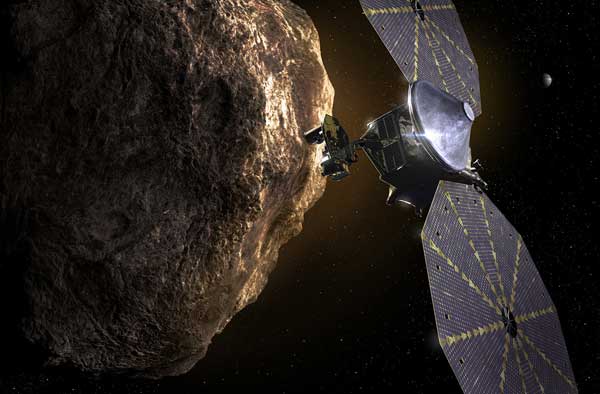
NASA Makes Progress in Fully Deploying Lucy’s Solar Array (Image Credit: Payload)

GREENBELT, Md. (NASA PR) — NASA’s Lucy mission team is in the midst of a multi-stage effort to further deploy the spacecraft’s unlatched solar array. On May 9, the team commanded the spacecraft to operate the array’s deployment motor using both the primary and back-up motor windings simultaneously to generate more torque, i.e. a harder pull. The motor operated as expected, further reeling in the lanyard that pulls the solar array open. After running the motor for a series of short intervals to avoid overheating, the team paused to analyze the results. Data from the spacecraft showed that the deployment was proceeding similarly to engineering ground tests, allowing the team to move forward with the second stage of the attempt. Analysis of the data also suggested that there was still additional lanyard to be retracted. The team sent the same commands again on May 12. Although this series of commands did not latch the solar array fully open, it did advance the deployment enough to increase the tension that stabilizes the arrays as was hoped.
On May 26, the spacecraft was again commanded to deploy the solar array. As in the first two attempts, both motor windings were operated simultaneously for short periods of time to avoid overheating. Afterwards the team again analyzed the data from the event, which again showed that the array was continuing to open. The team repeated the deployment command sequence a fourth time on June 2. While the array still did not latch, the data indicates that it continued to further deploy and stiffen throughout the attempt.
The team has several more opportunities to repeat these deployment commands. While there is no guarantee that additional attempts will latch the array, there is strong evidence that the process is putting the array under more tension, further stabilizing it. Even if the array does not ultimately latch, the additional stiffening may be enough to fly the mission as planned.
The spacecraft completed a trajectory correction maneuver on June 7. This was the first in a series of maneuvers the spacecraft will take in preparation for the mission’s first Earth gravity assist scheduled for October 16, 2022.








